Art World
Why Showtime’s ‘Billions’ Is Right on the Money When It Comes to Smug Hedge-Fund Art
The fake TV show includes real work by blue-chip artists.
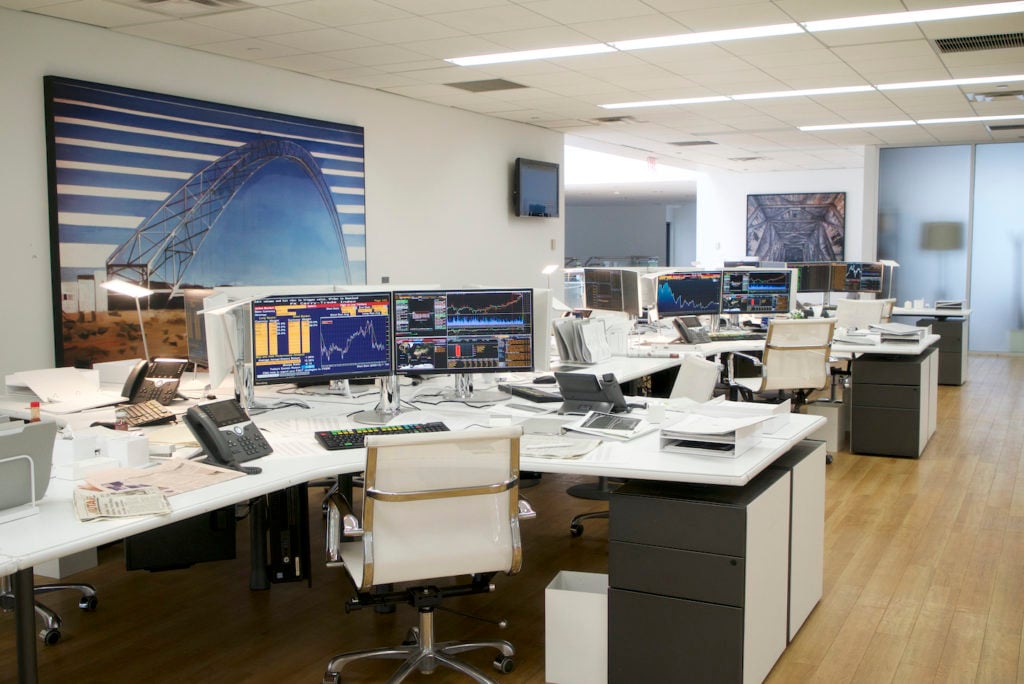
The fake TV show includes real work by blue-chip artists.

The Showtime drama “Billions,” which chronicles the battle between a dogged US Attorney and a cocky hedge-fund mogul, works hard to get Wall Street right—and its quest for veracity extends to the art on set.
Like any upstart looking to make his name in high society, the show’s protagonist, Bobby “Axe” Axelrod (played by Damian Lewis), uses art to illustrate his status, his shrewdness, and his good taste. But creating a collection for a one-percenter isn’t easy. The show’s staff jumps through elaborate hoops to identify, source, and license the art that lines the walls of the Axe Capital headquarters, which includes works by Jean-Michel Basquiat, David Smith, and Huma Bhabha.
“Billions” is loosely based on the widely publicized, real-life cat-and-mouse game between S.A.C Capital and Point72 founder Steve Cohen and former US Attorney for Southern New York, Preet Bharara, played by Paul Giamatti. (The show was co-created by Andrew Ross Sorkin, a financial journalist for the New York Times.) And since Cohen is an avid art collector with billion-dollar holdings that include works by Picasso, Andy Warhol, and Jeff Koons, it’s no surprise that “Billions” considered art more than just a decorative backdrop.
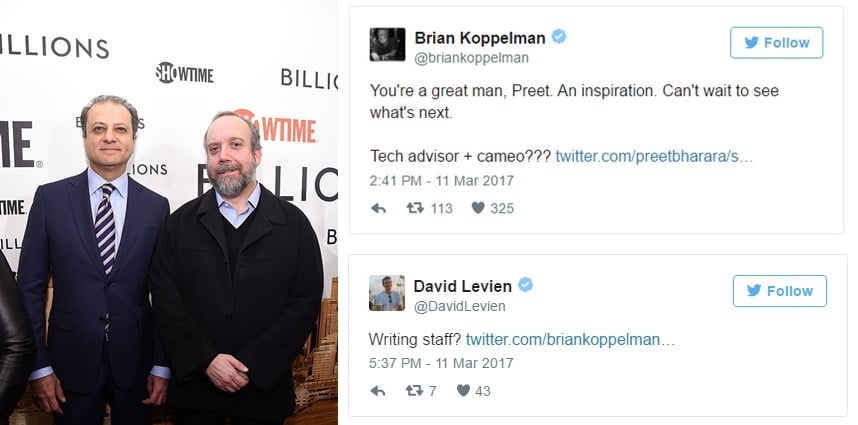
Left: Preet Bharara with Paul Giamatti. Courtesy of Michael Loccisano/Getty Images for Showtime. Right: Billions producers suggesting a new gig for Bharara following his removal by President Trump. Screenshot via Twitter.
The first step of developing a collection worthy of a Wall Street billionaire? Research, according to the show’s production designer Michael Shaw. Shaw went on a touring spree of Wall Street offices, and took note of recurring artists and themes. As it turns out, the Wall Street elite don’t have very diverse tastes. “There were certain pieces that if you went from hedge fund, to fund, to fund—they were always there. Always the Warhol dollar sign, the graphic Christopher Wool, ironic Richard Prince, the Robert Longo, and the Basquiat, always a Basquiat; it was like a checklist.”
Next, Shaw set out to get his hands on similar material. As a TV production designer, he doesn’t need to borrow the originals—he just needs to get approval to create exact replicas of them. “You’re not looking to buy it,” he says. “You’re only looking to get the rights to use it for the season—to get a high-quality resolution that you can reproduce…and then destroy at the end of the season.” The show is contractually bound to document the destruction of reproductions at the end of filming.
The second season, for example, features Tony Smith’s sculpture For P.C., a hulking seven-foot-wide, five-foot-tall black mass. The team fabricated and installed a full-scale plywood reproduction of the welded bronze original (with the assistance of the artist’s estate) in the atrium of Axe Capital’s offices.
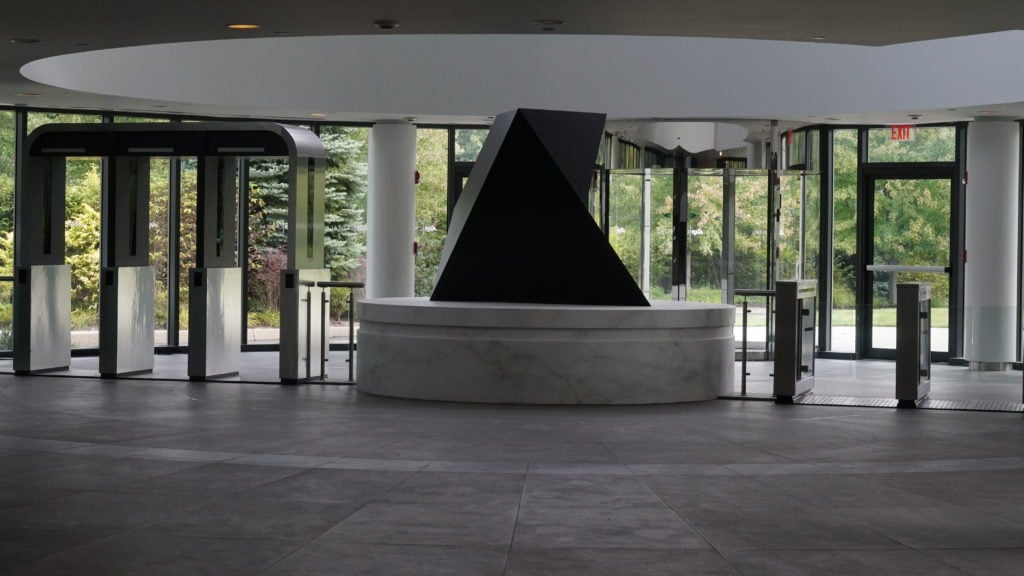
A reproduced Tony Smith sculpture, photo © Nicole Rivelli, image courtesy of Michael Shaw.
The whole process begins months in advance of shooting, and once licensing is agreed on, the works have to be printed, stretched, framed, and hung in the spaces, just as a real hedge fund would decorate its offices with real art. But the production designer also has to consider how the work will look to viewers on the other side of the TV screen.
For a scene in which Axe Capital analysts are poring over stock-market data, for example, Shaw chose “a work that is simple, and doesn’t detract from the charts and graphs projected on the computers, or actually resembles the chaos of a Bloomberg chart.” Shots inside the lead character’s home, meanwhile, reveal a darkened safe that houses Old Master paintings and crates with Sotheby’s auction house stickers.
Shaw considers the art in “Billions” an essential tool to set the mood and reflect broader developments in the soapy plot. In the first season—which establishes Axelrod as a driven, take-no-prisoners kingpin—the hedge fund’s offices are full of paintings by brand names and market darlings.
The Axe Capital set included Basquiat’s nearly 12-foot-long Nile, along with paintings by David Salle, Adam Pendleton, Aaron Young, and Kristin Baker. (Notably, the real Steve Cohen is the reported consignor of a Basquiat painting in last week’s postwar and contemporary sale at Christie’s.) These colorful, high-impact compositions immediately show the audience “that these are high-powered people,” Shaw says. “The other thing we wanted to convey is that Axe [Damian Lewis] is ruthless. So the art had to be in-your-face, bold.”
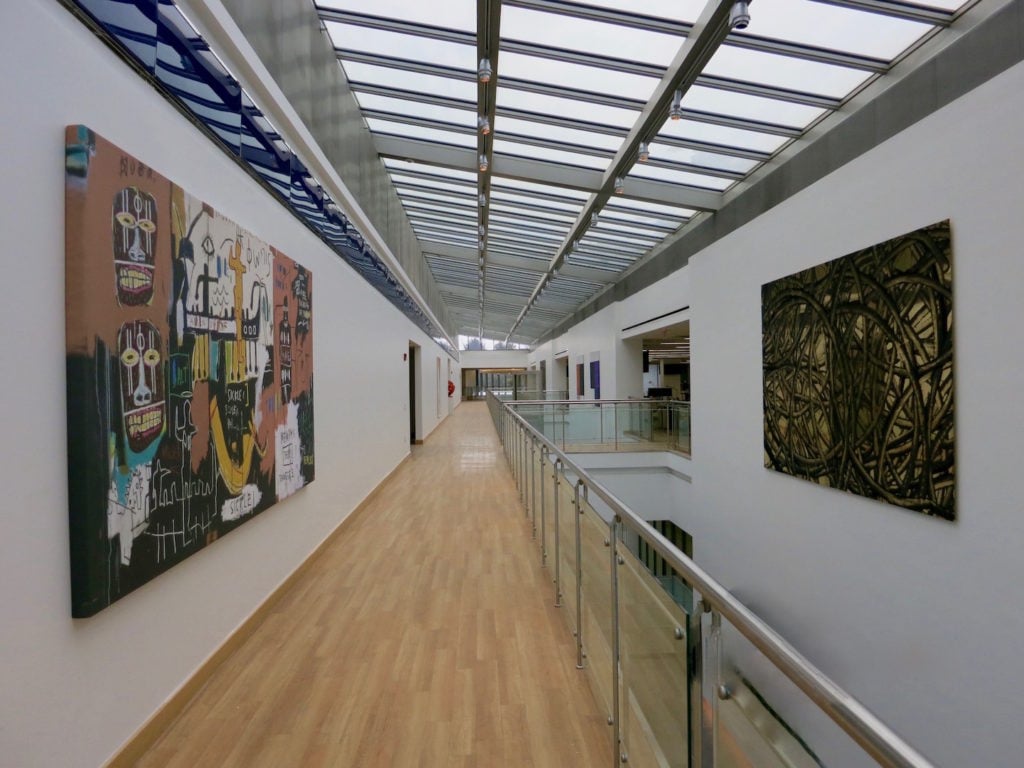
The hallway at Axe Capital. Left, Jean-Michel Basquiat’s Nile (1983). Right: Aaron Young’s Untitled. Image © Nicole Rivelli, courtesy of Michael Shaw.
Things took a turn in the second season, which ended last week. When the season begins, Axe has destroyed his company and his entire legacy is thrown into question. “The showrunners wanted to have a completely different feeling—more oppressive, and austere feeling,” Shaw says.
“My reference for the second season was World War II bunkers, feeling like he is shut down emotionally, so we went more with photography…things that are more industrial and cold.” That included Edward Burtynsky and Gregory Crewdson photographs, as well as paintings by Carla Klein of bleak landscapes and endless roads as seen through the windshield of a car.
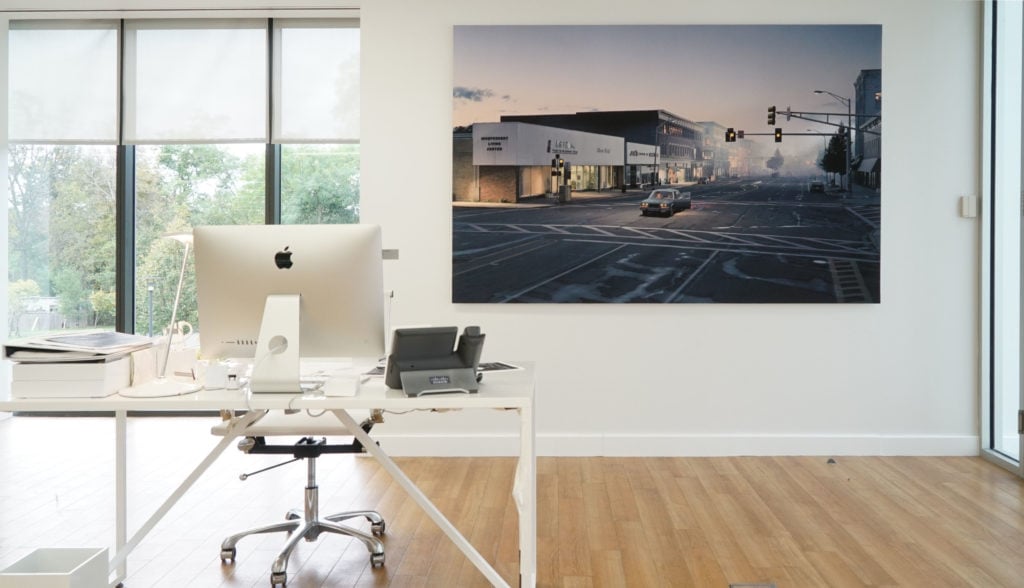
Gregory Crewdson’s Untitled from Beneath the Roses (2003-2008). Image © 2017 N. Rivelli, courtesy of Culture Corps.
“In the first season we already established yes, he has stuff that’s really important and expensive,” Shaw says. “For the second season, you might not know that this is a Gregory Crewdson, but it’s really important to convey the emotional impact.”
To help realize his vision, Shaw works with Culture Corps, a for-profit company established by Art Production Fund founders Doreen Remen and Yvonne Force Villareal in 2012. Shaw identifies the works, and then Remen and Villareal collaborate to make the vision a reality, tapping into their 20-year-long relationship with artists and estates to acquire image licenses.
But not everything always goes according to plan. Along with paperwork and budgetary restrictions, there are other potential hiccups. Some artists aren’t interested in serving as window dressing for a fictional hedge fund. Robert Longo, for instance, demurred from having one of his works included in the show’s first season.
For the first season, Shaw wanted to secure a sculpture by John Chamberlain. But the artist’s gallery, Gagosian, had planned a show of his work right in the middle of the “Billions” production schedule, so the collaboration wasn’t possible. In the end, the designers went with a work by Joel Shapiro instead.
Sometimes, even hedge-fund managers have to compromise.
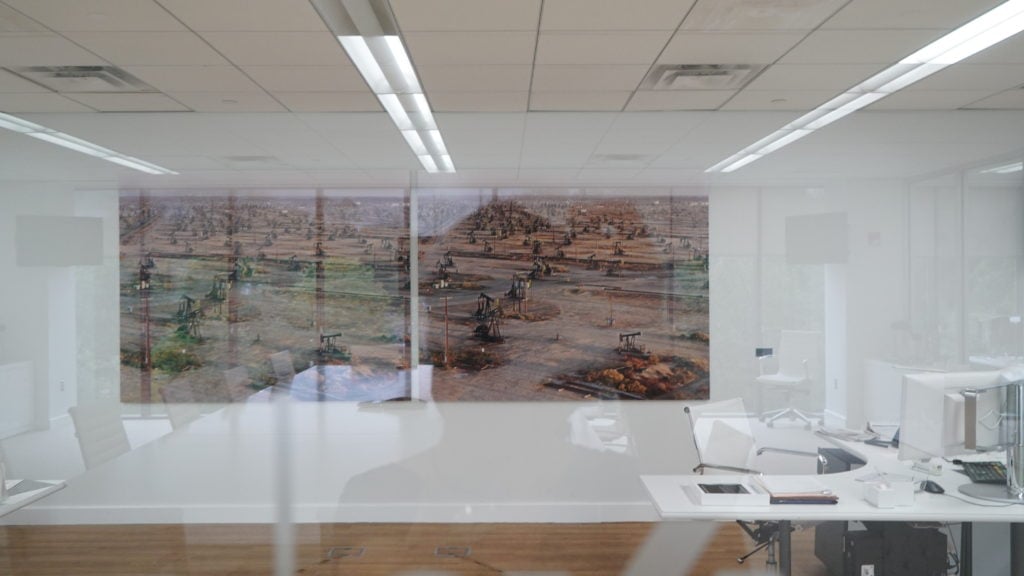
Edward Burtynsky’s Oil Fields #19ab, Begrudge, California (2003). Image © 2017 N. Rivelli, courtesy of Culture Corps.
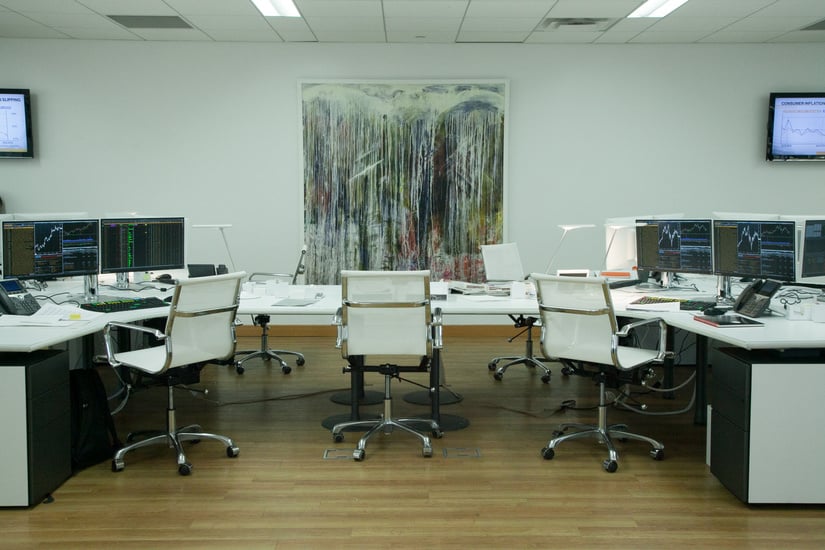
Pat Steir’s Portrait of a Waterfall (1987-1988). Image © 2017 N. Rivelli, courtesy of Culture Corps.
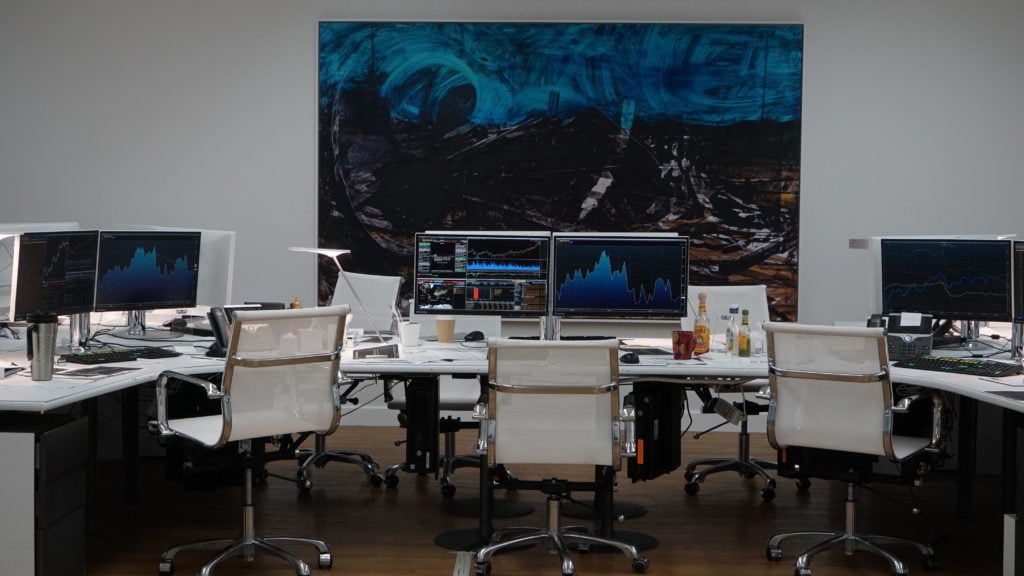
Huma Bhabha’s Untitled (2013) on the set of “Billions.” Image © Nicole Rivelli, courtesy of Michael Shaw.
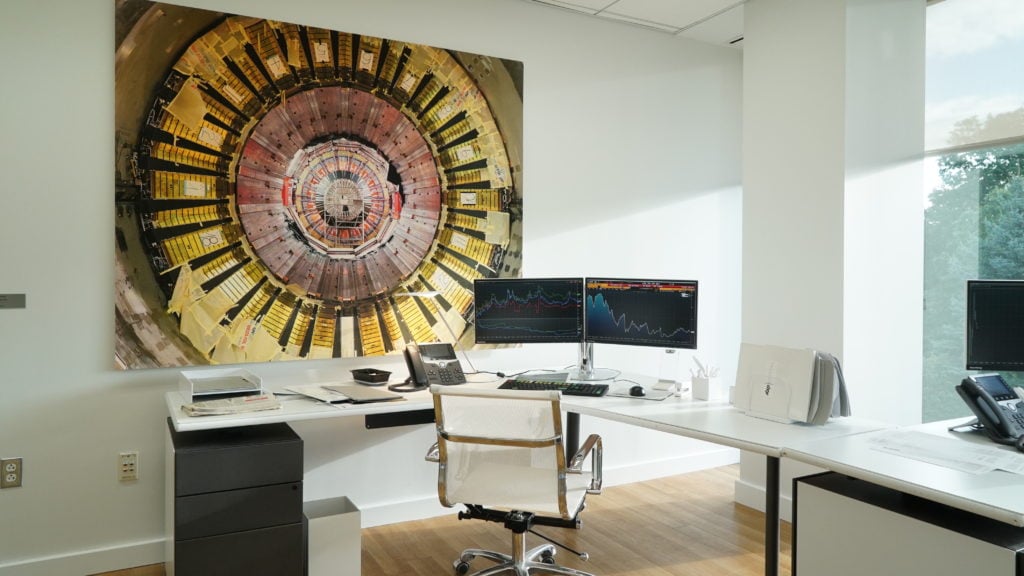
Simon Norton’s Large Hadron Collider No. 5 (2007). Image © Nicole Rivelli, courtesy of Michael Shaw.
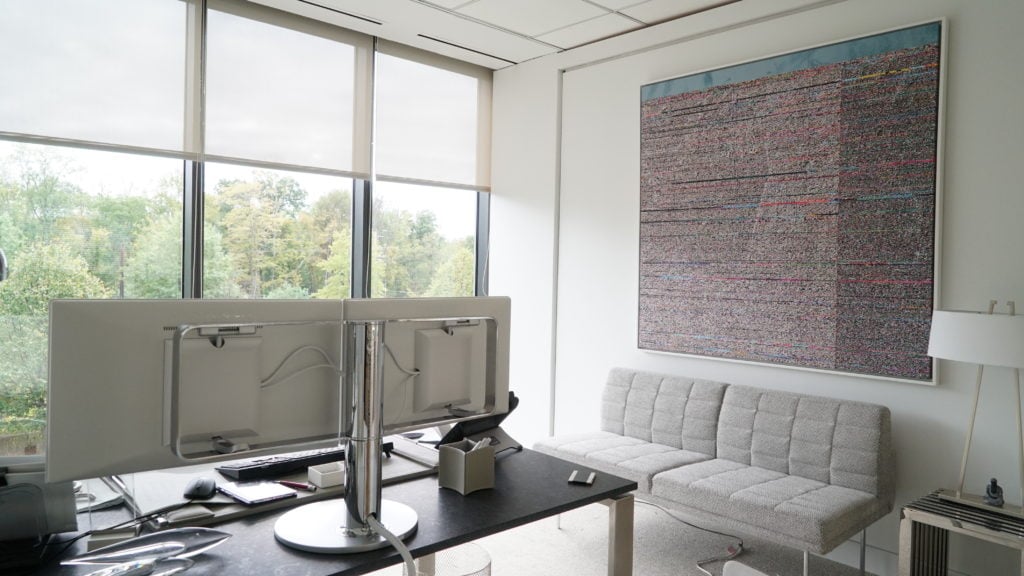
Evan Trine’s Two Forks and Two Spoons (2014) on the set of “Billions.” Image © Nicole Rivelli, courtesy of Michael Shaw.
Note: This story has been updated to reflect that set designers sought to include John Chamberlain’s sculpture in season one, not season two, and that the work by Tony Smith was always intended for inclusion in the second season.